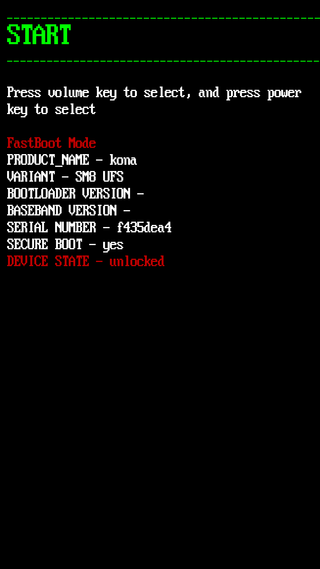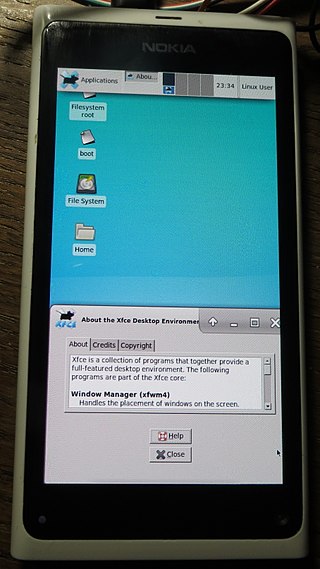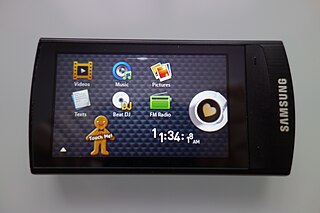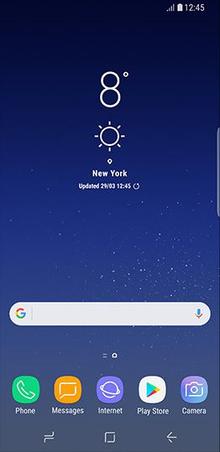
A brick is a mobile device, game console, router, computer or other electronic device that is no longer functional due to corrupted firmware, a hardware problem, or other damage. The term analogizes the device to a brick's modern technological usefulness.

The iOS SDK, formerly the iPhone SDK, is a software development kit (SDK) developed by Apple Inc. The kit allows for the development of mobile apps on Apple's iOS and iPadOS operating systems.
Rooting is the process by which users of Android devices can attain privileged control over various subsystems of the device, usually smartphones and tablets. Because Android is based on a modified version of the Linux kernel, rooting an Android device gives similar access to administrative (superuser) permissions as on Linux or any other Unix-like operating system such as FreeBSD or macOS.

Fastboot is a communication protocol used primarily with Android devices. It is implemented in a command-line interface tool of the same name and as a mode of the bootloader of Android devices. The tool is included with the Android SDK package and used primarily to modify the flash filesystem via a USB connection from a host computer. It requires that the device be started in Fastboot mode. If the mode is enabled, it will accept a specific set of commands, sent through USB bulk transfers. Fastboot on some devices allows unlocking the bootloader, and subsequently, enables installing custom recovery image and custom ROM on the device. Fastboot does not require USB debugging to be enabled on the device. To use fastboot, a specific combination of keys must be held during boot.

The hacking of consumer electronics is a common practice that users perform to customize and modify their devices beyond what is typically possible. This activity has a long history, dating from the days of early computer, programming, and electronics hobbyists.
The Samsung Infuse 4G was an Android smartphone that was released by Samsung in May 2011. It has a 1.2 GHz Hummingbird processor with 8–16 GB internal Flash memory, a 4.5 inch 480×800 pixel Super AMOLED Plus capacitive touchscreen display, an 8-megapixel camera and a 1.3-megapixel front-facing camera.

The Android Debug Bridge is a programming tool used for the debugging of Android-based devices. The daemon on the Android device connects with the server on the host PC over USB or TCP, which connects to the client that is used by the end-user over TCP. Made available as open-source software under the Apache License by Google since 2007, its features include a shell and the possibility to make backups. The adb software is available for Windows, Linux and macOS. It has been misused by botnets and other malware, for which mitigations were developed such as RSA authentication and device whitelisting.

Android software development is the process by which applications are created for devices running the Android operating system. Google states that "Android apps can be written using Kotlin, Java, and C++ languages" using the Android software development kit (SDK), while using other languages is also possible. All non-Java virtual machine (JVM) languages, such as Go, JavaScript, C, C++ or assembly, need the help of JVM language code, that may be supplied by tools, likely with restricted API support. Some programming languages and tools allow cross-platform app support. Third party tools, development environments, and language support have also continued to evolve and expand since the initial SDK was released in 2008. The official Android app distribution mechanism to end users is Google Play; it also allows staged gradual app release, as well as distribution of pre-release app versions to testers.

Replicant is a free operating system (OS) based on the Android mobile platform that intends to replace all proprietary Android components with free-software counterparts. It is available for several smartphones and tablet computers. It is written in the same programming languages as Android. The modifications are mostly in the C language; the changes are mostly to the lower-level parts of the OS, such as the Linux kernel and drivers that use it.

The Samsung Captivate Glide (SGH-i927) as it is called in the United States, and sold as the Samsung Galaxy S Glide (SGH-i927R) in Canada, is the first physical QWERTY Galaxy S class smartphone running under the Android operating system to be released by Samsung for AT&T (US) and Rogers Wireless (Canada).
The Samsung Galaxy S Relay 4G is an Android touchscreen slider smartphone designed and manufactured by Samsung for T-Mobile USA. It resembles the Samsung Epic 4G in appearance and shares the Epic 4G's screen and camera specifications, but the CPU and other internal hardware is more similar to the Samsung Galaxy S III.
Samsung Knox is a proprietary security and management framework pre-installed on most Samsung mobile devices. Its primary purpose is to provide organizations with a toolset for managing work devices, such as employee mobile phones or interactive kiosks. Samsung Galaxy hardware, as well as software such as Secure Folder and Samsung Wallet, make use of the Knox framework.

The Samsung YP-R1 is a portable media player made by Samsung, first leaked on the webshop play.com on June 14, 2009 and then released at the end of September 2009. It was developed along with the YP-R0 with which it shares several specifications . The R1 is available in four different Flash memory capacities: 4 GB, 8 GB, 16 GB and 32 GB. It comes in three different colors: black, silver and pink. It features an aluminum case, a 2.6 inch TFT LCD capacitive touchscreen with a resolution of 240 by 400 pixels, a RDS FM tuner, bluetooth and a proprietary USB connector. Several EQ and sound effects are available through Samsung's DNSe 3.0 sound engine.

The Samsung Galaxy J5 is an Android smartphone produced by Samsung Electronics. It was unveiled and released in June 2015. It has Qualcomm Snapdragon 410 SoC that is backed by 1.5 GB RAM and that has a 64 bit processor, 32bit mode OS.

Samsung Experience is a discontinued software overlay for the Android "launcher" by Samsung for its Galaxy devices running Android 7.x “Nougat” and Android 8.x “Oreo”. It was introduced in late 2016 on a beta build based on Android 7.0 “Nougat” for the Galaxy S7, succeeding TouchWiz. It has been succeeded in 2018 by One UI based on Android 9 “Pie” and later versions.

Bootloader unlocking is the process of disabling the bootloader security that makes secure boot possible. It can make advanced customizations possible, such as installing a custom firmware. On smartphones this can be a custom Android distribution or another mobile operating system. Some bootloaders are not locked at all, others can be unlocked using a standard command, others need assistance from the manufacturer. Some do not include an unlocking method and can only be unlocked through a software exploit.
The Qualcomm Emergency Download mode, commonly known as Qualcomm EDL mode and officially known as Qualcomm HS-USB QD-Loader 9008 is a feature implemented in the boot ROM of a system on a chip by Qualcomm which can be used to recover bricked smartphones. On Google's Pixel 3, the feature was accidentally shown to users after the phone was bricked.

The Android recovery mode is a mode of Android used for installing updates and wipe data. It consists of a Linux kernel with ramdisk on a separate partition from the main Android system.
The booting process of Android devices starts at the power-on of the SoC and ends at the visibility of the home screen, or special modes like recovery and fastboot. The boot process of devices that run Android is influenced by the firmware design of the SoC manufacturers.















